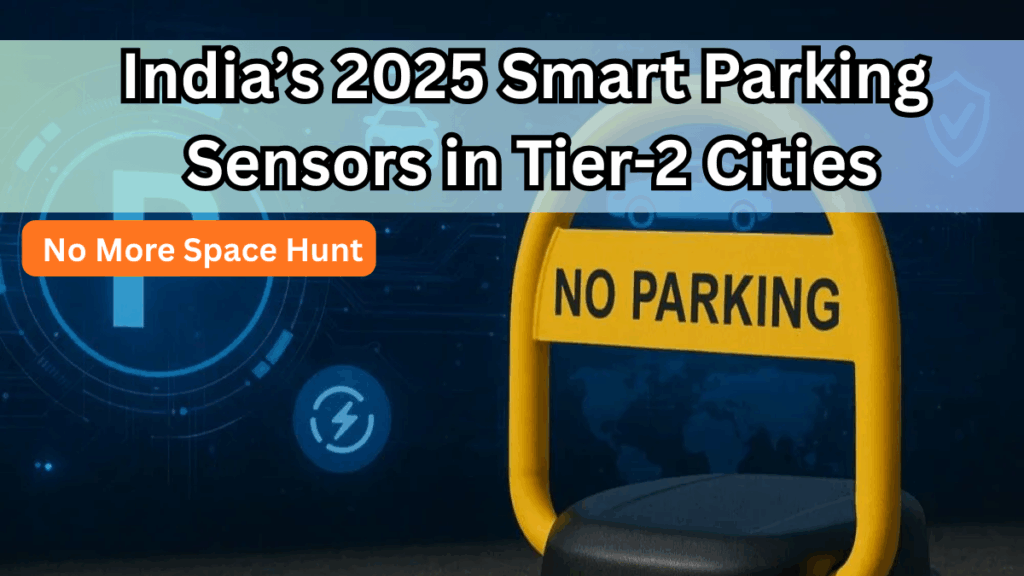Urban traffic in India has long been a challenge. As cities expand, finding a parking space often feels like a treasure hunt. But 2025 brings a transformative solution: Smart Parking Sensors 2025, designed to revolutionize how vehicles are parked in India’s tier-2 cities.

What Are Smart Parking Sensors?
Smart Parking Sensors 2025 are IoT-enabled devices installed in parking lots or roadside parking slots. They detect whether a parking spot is vacant or occupied and relay this information to drivers through mobile apps or digital signboards.
Key features include:
-
Real-time availability updates
-
Seamless integration with mobile apps
-
Reduced traffic congestion
-
Efficient space utilization
These sensors are part of India urban parking tech innovations aimed at making city life smoother and greener.
Why Tier-2 Cities Are Getting Priority
While metro cities like Mumbai and Delhi are already exploring smart parking solutions, tier-2 cities are catching up fast. Here’s why:
-
Growing vehicle ownership: Cars and two-wheelers are increasing rapidly.
-
Limited parking infrastructure: Narrow streets and old city layouts make parking a challenge.
-
Government push: Local authorities are incentivizing smart parking projects.
Tier-2 City Implementation 2025
| Tier-2 City | Expected Implementation | Benefits |
|---|---|---|
| Jaipur | Q2 2025 | Reduced street congestion |
| Kochi | Q3 2025 | Real-time parking alerts |
| Lucknow | Q4 2025 | Better utilization of parking zones |
| Nagpur | Q1 2025 | Environment-friendly traffic flow |
How India Urban Parking Tech Is Evolving
The integration of Smart Parking Sensors 2025 is part of a broader shift in India urban parking tech:
-
IoT Connectivity: Sensors communicate with apps for live updates.
-
Data Analytics: Helps city planners optimize parking zones.
-
Payment Integration: Cashless payment for parking via mobile wallets.
-
Green Parking Initiatives: Promotes eco-friendly transport by reducing idle time.
Benefits for Citizens
The real advantage of these sensors is felt by everyday users:
-
Quick identification of empty spots
-
Less fuel wastage and emissions
-
Reduced parking-related stress
-
Enhanced urban mobility
Challenges and Solutions
Even as cities embrace smart parking, challenges remain:
-
High installation cost: Public-private partnerships help share expenses.
-
Maintenance needs: Regular monitoring ensures sensor accuracy.
-
Digital literacy: Awareness campaigns guide citizens on app usage.
The Road Ahead
By 2025, tier-2 cities in India are expected to witness smoother traffic and better parking management thanks to Smart Parking Sensors 2025. With ongoing innovation in India urban parking tech, urban life is set to become less stressful and more efficient.
FAQs About Smart Parking Sensors 2025
Q1: What exactly are Smart Parking Sensors?
A1: These are IoT-enabled devices that detect parking availability and send real-time updates to drivers via mobile apps or displays.
Q2: How will these sensors help tier-2 cities?
A2: They reduce congestion, save time, cut emissions, and make parking easier for residents.
Q3: Are these sensors expensive to install?
A3: Initial costs are high, but benefits like reduced congestion and fuel savings outweigh expenses. Public-private partnerships often fund installations.
Q4: Can citizens use apps to find parking spaces in real-time?
A4: Yes, the sensors connect to mobile apps, allowing drivers to locate free spots instantly and pay digitally.
Click here to learn more
